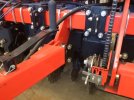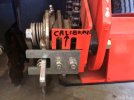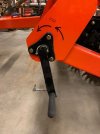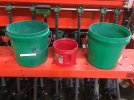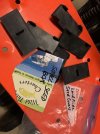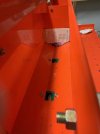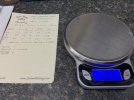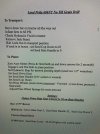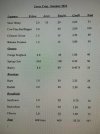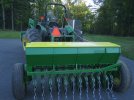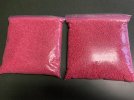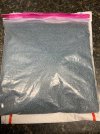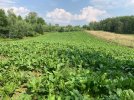...... For Wild Thing ,Swat1018,Bill,Foggy, and No till vets
i will begin my virgin voyage with GP 3pt 606NT this weekend and request advice on the following questions
I realize the answers may be intuitively obvious to the group but here goes....
1) Do you calibrate( if so,how) or go by rates in Seed Rate charts?
2) How do you set rates for a seed mix from a supplier( Green Cover,etc)?
3) If only operating the main seed box,are any adjustments needed for the empty small seed box( ie,disengagement, etc)?
thanks,
bill
I'm with Foggy for sure. I calibrate my drill for everything I plant. I guess if I were going to plant the exact same seed at the exact same rate from one year to the next I could calibrate it once and just use the same settings the next year but I don't. What kind of fun would that be? I plant a wide variety of different seeds and blends and I change them up every year. Even soybean seed varies in size from one brand to the next or one year from the next. RR sugar beet seed varies in size tremendously IMO. I have planted some coated seeds that are more than twice as big as another brand. When I am paying $100 - $125 per pound for roundup ready sugar beet seed, I don't want to guess whether or not I am using the right settings - I want to know. And it is very easy to know if you take the time to calibrate your drill when you plant.
Yes, the first time I calibrated my drill was a little intimidating because it was all new to me. After I did it 2 or 3 times it became a piece of cake. It is basically just collecting seed at different rates, weighing it and doing a little math in order to arrive at the correct settings for that particular seed. The hardest part about it to begin with was getting the hose clamps back on the drill when I was done. I finally decided that if I lifted the drill all the way up and put pails under the tubes I didn't need to unhook the hoses any more. Viola! How simple is that.
1) Do you calibrate( if so,how) or go by rates in Seed Rate charts?
So - Yes I calibrate every time I plant. Many of the seeds I plant are not are not listed in the Seed Rate Charts - Sugar Beets and Switchgrass are 2 that immediately come to mind. Also, as I mentioned above, seed sizes vary widely so...no - one size doesn't fit all.
2) How do you set rates for a seed mix from a supplier( Green Cover,etc)?
I mix my own blends/mixes using both the large seed box for large seed and the small seed box for small seed. This IMO, is the most accurate and efficient way of planting, even if I have to mix it myself. If I were to plant a pre-mixed blend, I would likely have to use the large box (unless the blend was all small seed). If the recommended rate was to drill at 40#/acre. I would calibrate the drill to plant that mix at 40#/acre. Basically the same as what I do when I plant my own mixes, except that I will calibrate to plant the large seed in the large seed box at one rate and the small seed n the small seed box at another rate. That is the glory of using a drill with 2 different seed boxes.
3) If only operating the main seed box,are any adjustments needed for the empty small seed box( ie,disengagement, etc)?
Nope - Just leave the small seed lever on 0 with no seed in the small box and plant away. You can not disengage only the small seed box, and really there is no reason you would want to if there is no seed in the box.
I can add some photos and notes for further clarification.
And speaking of NOTES: You probably already know by now that I am really high on keeping good notes. I have shared my notes with many of you on this forum as well as other forums. I will also say this - back up your notes on paper. My computer crashed last year and I lost thousands of photos and other data - including my notes pages from my drill. That hurt - but I am thankful that I also had most of those notes on paper in a notebook in the barn.


